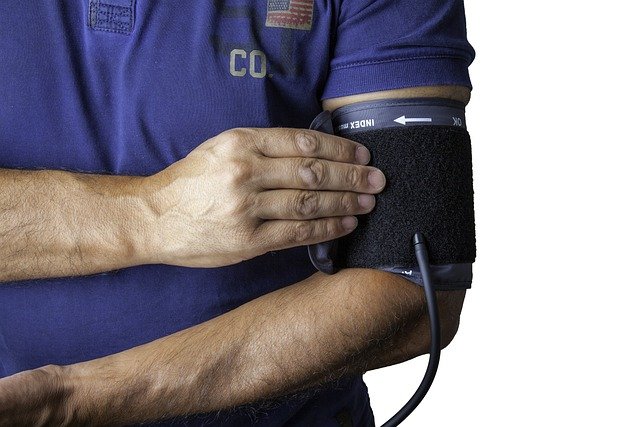Understanding Fatty Liver Disease: A Guide to Liver Health
Fatty liver disease involves the accumulation of fat in liver cells and has become increasingly common. This overview explores the different types of fatty liver conditions, potential contributing factors, and lifestyle approaches that may support liver health. Understanding these aspects can help individuals have more informed discussions with healthcare providers about liver wellness strategies.
Fatty liver disease represents one of the most prevalent liver conditions globally, characterized by the accumulation of excess fat in liver cells. This condition can progress from simple fat accumulation to more serious complications if left unaddressed, making awareness and early intervention essential for long-term health outcomes.
Fatty Liver Warning Signs
Recognizing early warning signs can help identify fatty liver disease before it progresses to more severe stages. Many individuals experience no symptoms initially, which is why the condition often goes undetected. However, some people may notice persistent fatigue, unexplained weight loss or gain, and discomfort in the upper right abdomen. Additional warning signs include elevated liver enzymes discovered during routine blood tests, insulin resistance, and metabolic syndrome markers. Healthcare providers often detect fatty liver disease through imaging studies or blood work performed for other reasons.
Fatty Liver Itching
Skin itching can occur as fatty liver disease progresses, particularly when liver function becomes compromised. This symptom, known as pruritus, results from the accumulation of bile acids in the bloodstream when the liver cannot process them effectively. The itching typically affects the palms, soles, and other areas of the body, often worsening at night. While not everyone with fatty liver disease experiences itching, its presence may indicate advancing liver dysfunction and warrants immediate medical evaluation.
Fatty Liver Symptoms
Symptoms of fatty liver disease vary significantly between individuals and disease stages. Early-stage fatty liver often presents no noticeable symptoms, earning it the nickname “silent disease.” As the condition progresses, people may experience abdominal pain or fullness, particularly in the upper right quadrant where the liver is located. Other symptoms include chronic fatigue, weakness, loss of appetite, nausea, and confusion or difficulty concentrating. Advanced stages may present with jaundice, swelling in the legs and abdomen, and dark-colored urine.
Fatty Liver Reversal
Fortunately, fatty liver disease can often be reversed through lifestyle modifications and medical management. The liver possesses remarkable regenerative capabilities, allowing it to recover from fat accumulation when underlying causes are addressed. Successful reversal typically requires sustained weight loss of 7-10% of total body weight, achieved through dietary changes and increased physical activity. Regular exercise, particularly aerobic activities, helps reduce liver fat and improve insulin sensitivity. Some individuals may require medications to manage underlying conditions like diabetes or high cholesterol that contribute to fatty liver development.
Fatty Liver Causes
Multiple factors contribute to fatty liver disease development, with the two primary categories being alcoholic and non-alcoholic causes. Non-alcoholic fatty liver disease (NAFLD) has become increasingly common, affecting approximately 25% of the global population. Primary causes include obesity, type 2 diabetes, insulin resistance, high cholesterol, and metabolic syndrome. Genetic factors also play a role, with certain populations showing higher susceptibility. Additional risk factors include rapid weight loss, certain medications, viral hepatitis, and autoimmune conditions. Understanding these causes helps individuals make informed decisions about prevention and treatment strategies.
| Treatment Option | Provider Type | Cost Estimation |
|---|---|---|
| Lifestyle Counseling | Registered Dietitian | $100-200 per session |
| Medical Monitoring | Hepatologist | $300-500 per visit |
| Imaging Studies | Radiology Centers | $200-800 per scan |
| Prescription Medications | Pharmacy/Insurance | $50-300 monthly |
| Weight Management Programs | Healthcare Systems | $200-500 monthly |
Prices, rates, or cost estimates mentioned in this article are based on the latest available information but may change over time. Independent research is advised before making financial decisions.
Managing fatty liver disease requires a comprehensive approach involving dietary modifications, exercise, and regular medical monitoring. Healthcare providers typically recommend a Mediterranean-style diet rich in fruits, vegetables, whole grains, and lean proteins while limiting processed foods, sugary beverages, and saturated fats. Regular follow-up appointments allow for monitoring of liver function tests and adjustment of treatment plans as needed. With proper management and lifestyle changes, many individuals can successfully reverse fatty liver disease and prevent progression to more serious liver conditions.
This article is for informational purposes only and should not be considered medical advice. Please consult a qualified healthcare professional for personalized guidance and treatment.





